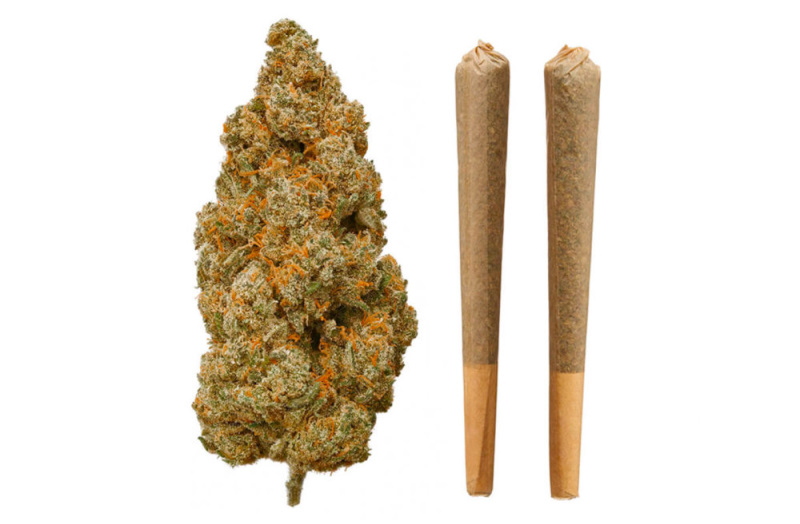With what feels like thousands of available strains on the market, trying to choose can be a dizzying experience for consumers. Each strain looks, smells and tastes different, and therefore can produce different psychological effects. Luckily, our staff here at Cheeky’s Cannabis are highly knowledgeable on the different strains, and can help you find the one that’s right for your goals or needs. In fact, the industry as a whole is overwhelmingly helpful, friendly and knowledgeable.
The Indica/Sativa/Hybrid model is a classification system used to help consumers differentiate between the effects of various strains. And although it isn’t the only classification system being used, it is the most commonly favoured in dispensaries. The system dates back to 1785, when French biologist Jean-Baptiste Lamarck updated the naming convention with two separate species, ‘Cannabis Sativa’, and ‘Cannabis Indica’.
In this blog post, we’ll break down the main differences between Indica, Sativa, and Hybrid strains, with the aim of helping you determine which strains are best for you.
DIFFERENCES IN STRUCTURE & GROWING CONDITIONS

The names Indica and Sativa were originally given based on their physical structure, not their effects. Indica cannabis plants are shorter and thicker, with leaves that are shorter and fatter. On the other hand, Sativa cannabis plants are taller with longer and thinner leaves.
Each strain also has a favoured growing climate. Indica originated in modern day Middle East, so these strains are used to varying climates and rugged conditions. They soak up tons of sunlight and are ready to harvest quickly. Indica plants are also easier to grow at home, since they’re able to withstand harsh conditions and produce more cannabis in a shorter period of time. Just watch out for mold and mildew growth! The heavier, denser buds tend to attract undesirable pathogens because of their size.
Sativa plants originated in modern day Central America, Africa and even Asia. Growing in extremely hot and dry climates, these strains can take much longer to flower. Because of their taller and thinner structure, along with the fact the plants contain less chlorophyll, Sativas tend to be much more delicate. If you’re growing at home, you’ll want to make sure the temperature is high with sufficient humidity.
As you might’ve guessed, the effects and physical structure of Hybrid strains borrow from Indica and Sativa. Because professional growers are able to pick and choose the plant characteristics they’re looking for, they often choose the best of both an Indica and Sativa plant. Physically, they could look like something in between the two plant types.
DIFFERENCES IN PSYCHOLOGICAL EFFECT
While the world of weed strains can be incredibly nuanced and difficult to differentiate, the Indica/Sativa/Hybrid model works well for giving consumers a general direction. It’s possible to feel the more well-known psychological effects of Sativa after smoking an Indica strain, and vice versa. The rules are certainly not set in stone.
Indica strains are best known for providing a more relaxing “body high”. Sometimes referred to as the “nighttime strain”, Indicas are popular with movie nights, bedtime routines, and late-night bookworms. Indica’s are known to help people sleep, as they tend to slow down racing thoughts. They work great if you need to wind down before bed, or if you just need to slow down and relax.
Sativa strains are associated with feelings of energy and uplifting thoughts. Commonly referred to as the “daytime strain”, many people use Sativa strains for activities that require focus and productivity, like chores, writing, or reading. Because of Sativa’s uplifting qualities, many people rely on Sativa to help calm their feelings of anxiety and stress.
The world of Hybrid strains varies widely. Depending on how the grower has designed the strain, Hybrids can make you feel uplifted, happy, or relaxed. Ultimately, it will be best to consult a Cheeky’s Budtender for advice.
DIGGING DEEPER

Because the psychological effects are difficult to predict, and can occur differently person to person, there is demand for a more scientific approach to organizing weed strains. That’s where cannabinoids and terpenes come in. Cannabinoids and terpenes are the actual chemical compounds found in cannabis plants, and they’re being used as a more accurate method to predict effects.
Tetrahydrocannabinol (THC) and Cannabidiol (CBD) are the two most well known and most prevalent cannabinoids. THC is the compound that makes you feel ‘high’, and is responsible for relieving symptoms like anxiety, pain and nausea. CBD is the non-psychoactive compound that can still be used to treat many symptoms.
Terpenes are aromatic compounds found fruit, spices, and plants (including cannabis). There are a wide range of terpenes available in weed strains, which then interact with the cannabinoids to create their own psychological effects.
While the world of cannabinoids and terpenes is definitely more complicated, your budtender should be able to point you in the right direction. Don’t be afraid to ask!
THINGS TO CONSIDER WHEN CHOOSING A STRAIN
When choosing a cannabis strain, there are a few things you should keep in mind. Ultimately, you should always be prepared for a little variance. That being said, here are a few things that could influence your experience with cannabis:
- Your environment
Otherwise known as ‘set and setting’, your environment plays a big part in how you experience cannabis. First, consider your state of mind. If you’ve been feeling really anxious about something or are worried about trying cannabis, that could affect your experience – regardless of the strain. You should also consider where you are. If you’re at home, out for a walk in the forest or at a rock concert, you could experience very different psychological effects. Find a safe space (people and environment)!
- The dosage

The dosage is another key factor to consider. Strains contain various levels of THC, and can be consumed in different ways. If you have a low tolerance, you should definitely start with something lower in THC. It also wouldn’t necessary to smoke an entire joint by yourself – just a couple puffs will do fine! For example, the strongest strain Cheeky’s has in stock currently is 34%, which is considered one of, or the highest THC % for dried cannabis. If you’re new, your tolerance is bound to be low. Start with a THC of about 15-20%.
- We’re all built a little different
One last thing to think about is the fact that we’re all different. Thanks to our individual body chemistry, you may feel an entirely different psychological effect than your friend, even if you were smoking the same joint. Body weight and tolerance levels come into play as well. Because we’re all built a little different with our own personal experiences, nothing is guaranteed when it comes to cannabis.
The psychological effects of weed on in different people in different settings at different dosages is quite difficult to predict. And while science has come along way, we still have a lot to learn. Your best bet is to rely on the friendly expertise of your local cannabis merchant and budtenders.
